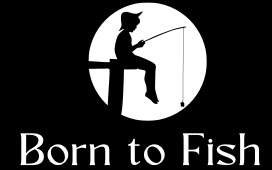Fly fishing is a captivating and elegant form of angling that immerses you in the natural rhythm of the water. Whether you’re a novice or experienced angler, mastering the art of fly fishing requires a combination of skill, technique, and the right gear. In this comprehensive guide, we will explore the techniques and gear necessary to embark on a rewarding fly fishing journey.
- Understanding Fly Fishing Equipment: Fly fishing requires specialized gear. Familiarize yourself with the essential components, including fly rods, reels, fly lines, leaders, and flies. Each piece plays a crucial role in presenting the fly and engaging with the fish.
- Fly Rod Selection: Choose a fly rod that suits your fishing style and target species. Factors to consider include rod length, weight, and action. Lighter rods are suitable for smaller fish and delicate presentations, while heavier rods handle larger fish and windy conditions.
- Fly Reels and Line: Select a fly reel that balances well with your chosen rod. Match the reel with an appropriate fly line, considering its weight, taper, and density. The fly line allows you to cast the fly and control its movement on the water’s surface or subsurface.
- Mastering Casting Techniques: Practice fundamental casting techniques, including the basic overhead cast, roll cast, and the more advanced double haul. Focus on developing a smooth, controlled casting motion to achieve accurate and delicate presentations.
- Understanding Fly Patterns: Explore the vast array of fly patterns available, including dry flies, wet flies, nymphs, and streamers. Understanding the life cycles of insects and other aquatic creatures will help you choose the appropriate fly patterns for different fishing scenarios.
- Presentation and Drift Control: Master the art of presenting the fly with precision and natural movement. Learn to mend the fly line to control its drift and avoid drag, allowing the fly to appear more enticing to the fish.
- Reading the Water: Develop the ability to read the water and identify likely holding areas for fish. Observe the currents, water depth, and structure to determine where fish are likely to be present. Target areas with cover, eddies, and seams for increased chances of success.
- Playing and Landing Fish: When a fish strikes, learn to set the hook gently yet firmly to avoid breaking the tippet. Once hooked, play the fish carefully, applying steady pressure while allowing it to tire. Use a landing net to safely bring the fish to hand for a quick release or capture.
- Practicing Fly Fishing Etiquette: Respect other anglers and the environment by practicing proper fly fishing etiquette. Give fellow anglers ample space, avoid unnecessary wading, and adhere to fishing regulations and conservation guidelines.
- Continued Learning and Exploration: Fly fishing is a lifelong pursuit, and there is always more to learn. Engage with local fly fishing communities, read books and articles, and consider taking lessons or joining guided trips to further refine your skills and deepen your knowledge.
Conclusion: Embarking on the art of fly fishing opens up a world of beauty, challenge, and connection with nature. By understanding the techniques and selecting the right gear, you’ll enhance your ability to present flies effectively and engage with fish in a unique and rewarding way. Embrace the artistry and tranquility of fly fishing, and let it guide you to unforgettable angling experiences. Tight lines and happy fly fishing!


